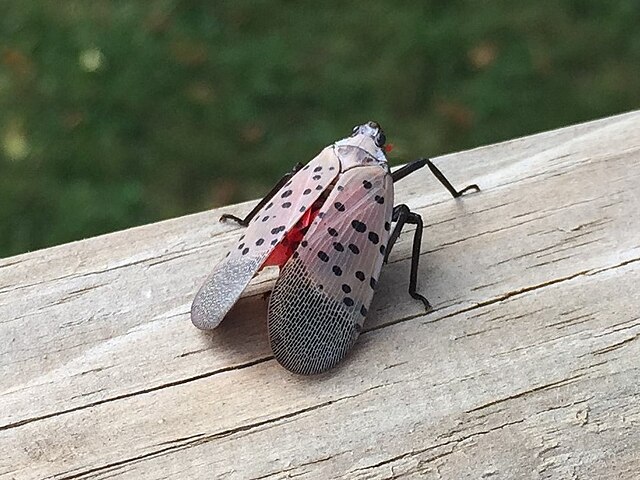NATIONAL NEWS – Spotted lanternfly spread accelerates across U.S.; here’s how you can help stop it
Ananya Roy, News Writer
The invasive spotted lanternfly, first discovered in Pennsylvania in 2014, has now spread to at least 15 states, posing growing risks to agriculture, forests, and native wildlife. With dense populations now established in places like New York, New Jersey, and Philadelphia, experts warn that the brightly colored insect threatens apple orchards, vineyards, and over 70 types of trees. “Spotted lanternfly has spread so much faster than a lot of invasives that we’ve seen in the past,” said Matthew Gallo of Finger Lakes PRISM, noting its rapid movement across state lines in just a few years. The insect feeds on sap and leaves behind a sugary residue that fosters mold growth, which further damages host plants.

Adult spotted lanternfly (Lycorma delicatula) in Southeastern Pennsylvania, USA. (Walthery, CC BY-SA 4.0 <https://creativecommons.org/licenses/by-sa/4.0>, via Wikimedia Commons)
Native to Asia, the spotted lanternfly likely arrived in the U.S. via imported goods. Since then, it has expanded westward, often hitching rides on cars, cargo, and outdoor equipment. The species has no natural predators in the U.S., making human awareness and action the best tools to slow its spread. Adults and egg masses are commonly found on the invasive “tree of heaven,” but lanternflies also attack economically vital crops and trees like maples, oaks, and grapevines. Their feeding weakens trees and disrupts ecosystems, affecting everything from bird habitat to fruit production.
Federal and state agencies, along with nonprofits and local governments, are urging the public to get involved. Residents are encouraged to learn how to identify all stages of the insect’s life cycle, inspect vehicles and gear before traveling, and report sightings to state invasive species hotlines. Destroying egg masses with hand sanitizer in sealed bags is also recommended. The spread of the lanternfly threatens much more than backyard gardens—protecting fall foliage, native wildlife, and key agricultural economies depends on collective vigilance.





